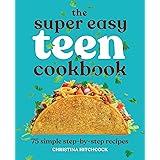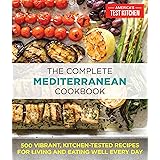Making delicious homemade pasta for one person is an achievable and rewarding culinary endeavor, as often demonstrated in quick visual guides like the video above. Fresh pasta offers a superior texture and flavor compared to its dried counterparts, and it is a delightful treat that can be prepared without the need for large batches or complicated equipment. This process allows for complete control over ingredients, ensuring a meal tailored exactly to individual preferences.
Creating a single serving of fresh pasta might seem daunting at first, yet the scaled-down recipe is quite manageable, requiring only a few basic ingredients and simple techniques. It is often believed that pasta making is a lengthy process reserved for special occasions or large family meals, but a small batch can be prepared relatively quickly, making it suitable even for a weeknight dinner. The meditative act of kneading and shaping dough can be surprisingly therapeutic after a long day.
Essential Ingredients for Single-Serving Homemade Pasta
The foundation of any great pasta is its ingredients, and for a single serving, the quantities are easily scaled down. Typically, a simple egg pasta dough is made from flour and eggs, with a touch of salt. For one person, a good starting point is approximately 100 grams of flour to one medium-sized egg.
All-purpose flour is a readily available and perfectly suitable choice for beginners, providing a good balance of protein for structure. For a more traditional Italian texture, ’00’ flour, known for its fine grind and lower protein content, is often preferred by experienced pasta makers. A pinch of salt is usually incorporated into the flour to enhance the overall flavor of the pasta. Some recipes might suggest a few drops of water or olive oil to adjust the dough’s consistency, especially if the egg is particularly small or the flour is very dry.
Selecting the Right Flour for Your Pasta Dough
The type of flour used significantly impacts the final texture of your homemade pasta for one. While all-purpose flour is generally forgiving and produces a good result, ’00’ flour creates a silkier, more tender pasta. This difference is mainly attributed to the protein content and the milling process of the flour.
When selecting flour, it is often recommended that one considers the desired firmness and chewiness of the pasta. Stronger flours with higher protein will result in a more elastic and chewier pasta, while softer flours yield a more delicate texture. For your initial attempts, simply using what is available in your pantry is perfectly acceptable, allowing practice with the technique before experimenting with specialized ingredients.
Mixing Your Homemade Pasta Dough
The mixing stage is where the magic begins, transforming simple ingredients into a cohesive dough. A traditional method involves creating a ‘well’ with the flour directly on a clean work surface, into which the egg is cracked. Alternatively, a bowl can be used, which might be preferred by those new to pasta making to minimize mess.
The egg is gently whisked with a fork, gradually incorporating flour from the sides of the well. This process continues until a shaggy dough forms, at which point the hands are used to bring the mixture together. All the flour should be gathered into a single mass, even if it appears a bit dry or crumbly initially. It is important that the dough begins to take shape before moving on to the kneading phase.
Achieving the Perfect Dough Consistency
The correct consistency of the pasta dough is crucial for successful rolling and shaping. A dough that is too wet will be sticky and difficult to work with, while one that is too dry will be crumbly and resist coming together. Adjustments are often made during the initial mixing stage.
If the dough feels too dry, a very small amount of water (half a teaspoon at a time) can be added. Conversely, if it is too sticky, a light dusting of flour can be worked in. Patience is key here; the dough will become more pliable and smooth with continued kneading, which is the next essential step in the homemade pasta for one process.
Kneading and Resting the Pasta Dough
Kneading is perhaps the most important part of pasta making, as it develops the gluten in the flour, which gives the pasta its elasticity and chewy texture. This process involves pushing, folding, and turning the dough on a lightly floured surface for about 7-10 minutes. The dough should transform from a rough, lumpy mass into a smooth, supple, and elastic ball that springs back when gently poked.
After kneading, the dough must be allowed to rest. This resting period, typically 30 minutes to an hour, allows the gluten to relax, making the dough much easier to roll out thinly. The dough is usually wrapped tightly in plastic wrap or covered with an inverted bowl to prevent it from drying out during this crucial resting phase. This step ensures that the effort put into kneading is fully realized in the final pasta product.
Rolling and Shaping Fresh Pasta
Once rested, the dough is ready to be rolled out. For a single serving, a simple rolling pin is often sufficient, although a pasta machine can provide a more uniform thickness. The dough is rolled very thinly, often to the point where it becomes somewhat translucent.
If using a rolling pin, the dough is worked from the center outwards, rotating it frequently and dusting lightly with flour to prevent sticking. For a pasta machine, the dough is passed through progressively thinner settings. Once the desired thinness is achieved, the sheet of pasta can be cut into various shapes, such as fettuccine, tagliatelle, or even simple squares for ravioli. The cut pasta should be laid out on a lightly floured surface to prevent clumping before cooking.
Creating Different Pasta Shapes by Hand
A significant advantage of making homemade pasta for one is the ability to easily customize the shape. After the dough is rolled thin, it can be folded and sliced for classic noodle shapes. For instance, a sheet can be folded several times and then cut into strips for fettuccine or tagliatelle.
For something like pappardelle, wider strips are cut. Small, irregular shapes, often called ‘maltagliati’ (badly cut), can also be made by simply cutting random pieces, which are charmingly rustic. Experimentation with different knives or even pastry cutters can lead to unique and personalized pasta shapes, adding a fun element to the cooking process.
Cooking Your Homemade Pasta for One
Cooking fresh pasta is a quick affair due to its high moisture content and delicate structure. A pot of generously salted water should be brought to a rolling boil. The salt is crucial, as it seasons the pasta from the inside out, making a significant difference in flavor.
Once the water is boiling vigorously, the fresh pasta is added. It usually cooks in just 2-4 minutes, depending on its thickness. The pasta should be tasted periodically to ensure it reaches the desired al dente texture, which means it is tender but still has a slight bite to it. Once cooked, the pasta is drained, often reserving some of the starchy pasta water to emulsify with the sauce. This homemade pasta for one is then ready to be tossed with a favorite sauce and enjoyed immediately.











